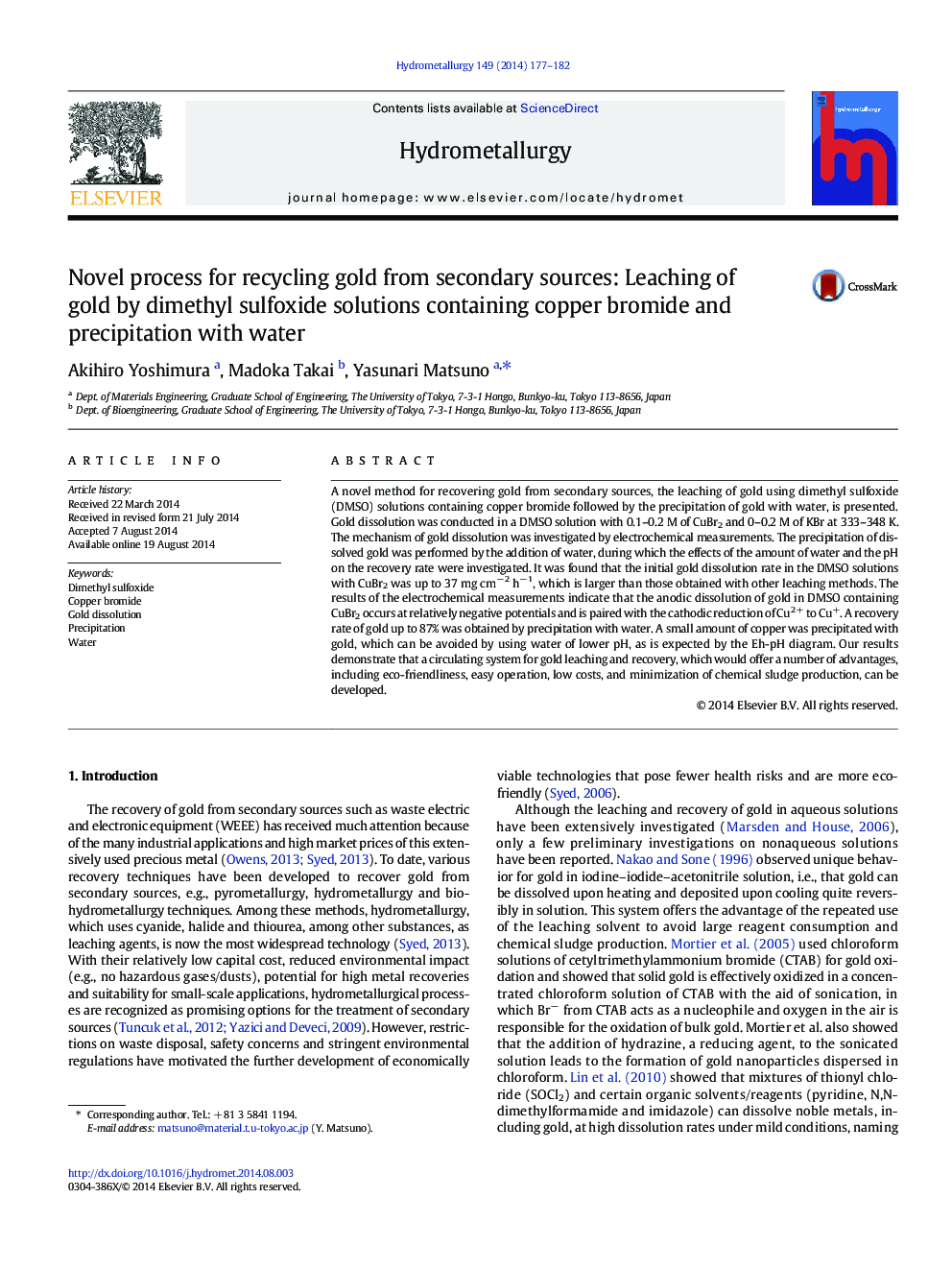| Article ID | Journal | Published Year | Pages | File Type |
|---|---|---|---|---|
| 212254 | Hydrometallurgy | 2014 | 6 Pages |
•A novel process for leaching and recovering gold is presented.•The leaching of gold by DMSO solutions of CuBr2 at a high rate can be achieved.•The recovery of gold can be easily achieved by precipitation with water.•Only gold can be selectively precipitated by using water of lower pH.•A circulating system for gold leaching and recovery can be developed.
A novel method for recovering gold from secondary sources, the leaching of gold using dimethyl sulfoxide (DMSO) solutions containing copper bromide followed by the precipitation of gold with water, is presented. Gold dissolution was conducted in a DMSO solution with 0.1–0.2 M of CuBr2 and 0–0.2 M of KBr at 333–348 K. The mechanism of gold dissolution was investigated by electrochemical measurements. The precipitation of dissolved gold was performed by the addition of water, during which the effects of the amount of water and the pH on the recovery rate were investigated. It was found that the initial gold dissolution rate in the DMSO solutions with CuBr2 was up to 37 mg cm− 2 h− 1, which is larger than those obtained with other leaching methods. The results of the electrochemical measurements indicate that the anodic dissolution of gold in DMSO containing CuBr2 occurs at relatively negative potentials and is paired with the cathodic reduction of Cu2 + to Cu+. A recovery rate of gold up to 87% was obtained by precipitation with water. A small amount of copper was precipitated with gold, which can be avoided by using water of lower pH, as is expected by the Eh-pH diagram. Our results demonstrate that a circulating system for gold leaching and recovery, which would offer a number of advantages, including eco-friendliness, easy operation, low costs, and minimization of chemical sludge production, can be developed.
Graphical abstractFigure optionsDownload full-size imageDownload as PowerPoint slide
